Sensors already equip a range of tools to enhance monitoring capacity for conservation. Some of the higher bandwidth technologies, like camera traps and acoustic monitoring systems, have been essential elements of the conservation toolkit for decades, and thus have enough users that we've created dedicated WILDLABS groups to address them. But a whole range of lower bandwidth sensors beyond these core technologies are being increasingly integrated into conservation monitoring systems, and offer rich new insights into the wildlife and ecosystems we're all working to protect. As with many technologies, cost and access have historically been challenges to the adoption of new sensors, but with low-cost and open-source solutions on the rise, we're excited to see what the future of this space holds.
Getting Started with Sensors:
- Watch Shah Selbe's Tech Tutors episode on scaling FieldKit, an open-source conservation sensor toolbox, from a project to a successful conservation tech product.
- Check out our Virtual Meetup about Low-Cost, Open-Source Solutions in conservation tech, including a talk by Alasdair Davies on the Arribada Initiative's work with thermal sensors in early warning systems.
- For a more in-depth introduction, watch the first video in our datalogger mini-series: Freaklabs: How do I get started with Arduino?
In this group, you'll meet others who are using and innovating diverse sensors in their work, discuss ways to make sensors more effective & accessible for conservationists, learn about what sensors are already helping us accomplish in the field, and have the opportunity to ask and answer questions. Join this group to get started!
Header image: Emma Vogel, University of Tromsø
Environmentalist and Python developer working in the realm of Remote Sensing. Fascinated by the intersection of technology and nature, with a focus on machine learning, ecological modeling, and biodiversity monitoring. 🌍
- 0 Resources
- 0 Discussions
- 11 Groups
Freaklabs
I'm an engineer and product designer working on wildlife conservation technology.



- 0 Resources
- 271 Discussions
- 13 Groups
Systems Engineer at Edge Impulse, experiencce with hands-on edge machine learning for wildlife conservation
- 0 Resources
- 0 Discussions
- 5 Groups
- @StephODonnell
- | She / Her
WILDLABS
I'm the Community Manager at WILDLABS



- 151 Resources
- 656 Discussions
- 30 Groups
- @bumbleben
- | He/Him
Junior dev in a bioacoustics startup, interested in all forms of remote sensing and biologging
- 0 Resources
- 0 Discussions
- 4 Groups
- @Fatuma
- | She/Her
I aim to transition my career towards conservation technology after gaining two years of experience in the tech industry.
- 0 Resources
- 0 Discussions
- 14 Groups
DIY electronics for behavioral field biology



- 1 Resources
- 48 Discussions
- 4 Groups
Jack of all trades and master of none
- 0 Resources
- 3 Discussions
- 2 Groups
- @Thomas_Luypaert
- | He/him
Norwegian University of Life Sciences (NMBU)
Ecological monitoring enthusiast with a focus on ecological and conservation research
- 1 Resources
- 1 Discussions
- 7 Groups
Wildlife Drones
Wildlife Drones has developed the world’s most innovative radio animal-tracking system using drones so you can track your radio-tagged animals like never before.

- 11 Resources
- 8 Discussions
- 32 Groups
- @rowan
- | they / them
Octophin Digital
Jack of all Trades. I've been a zoo keeper, a conservation geneticist and a web developer who specialises in conservation projects and orgs.
- 0 Resources
- 3 Discussions
- 15 Groups
- @YvanSG
- | he/him
Clemson University
Seabird ecologist at Clemson University, South Carolina Cooperative Fish and Wildlife Research Unit. Co-chair of Caribbean Seabird Working Group.



- 0 Resources
- 53 Discussions
- 6 Groups
In a recent publication we tested Underwater Passive Acoustic Monitoring (UPAM) as a feasible non-invasive technique to study the calling behavior of therathened aquatic Andean frogs under natural conditions in the...
6 April 2024
Article
You’re invited to the WILDLABS Variety Hour, a monthly event that connects you to conservation tech's most exciting projects, research, and ideas. We can't wait to bring you a whole new season of speakers and...
22 March 2024
This funding opportunity is to support projects to enhance existing, high TRL (7-9) marine biogeochemical sensors and integrate with National Marine Equipment Pool’s autonomous underwater platforms. You must be based...
11 March 2024
The IQOE Task Team on Low-Cost Hydrophones for Research, Education, and Citizen Science is looking for industry partners to develop a low-cost hydrophone.
15 December 2023
Funding
With $60,000, $30,000, and $10,000 grants available for 14 outstanding projects, the support of engineering and technology talent from Arm (the leading semiconductor design company), and access to the world’s biggest...
1 December 2023
Article
Read our interview with Clementine Uwamahoro, African Parks’ Country Manager in Conservation Technology overlooking technology operations for both Akagera National Park and Nyungwe National Park.
29 November 2023
The Department of Applied Ocean Physics and Engineering (AOPE) at the Woods Hole Oceanographic Institution (WHOI) seek to hire 1-2 scientists at any of the Assistant/Associate/Senior Scientist levels to develop research...
27 November 2023
TagRanger® is a state-of-the-art wildlife finding, monitoring and tracking solution for research, conservation and environmental professionals. With superior configurability for logging data, reporting location and...
23 November 2023
Yale University & Map of Life Rapid Assessments - XPRIZE
8 November 2023
Yale University & Map of Life Rapid Assessments - XPRIZE
8 November 2023
Yale University & Map of Life Rapid Assessments - XPRIZE
8 November 2023
The new white paper from Rainforest Connection (RFCx) explores the power of ecoacoustics and AI to monitor biodiversity and track progress towards GBF targets using case studies from around the world.
20 September 2023
April 2024
event
December 2023
event
November 2023
event
| Description | Activity | Replies | Groups | Updated |
|---|---|---|---|---|
| Hi everyone, @craig joined last month's Variety Hour to chat about Tagranger, which you can read more about here. A TagRanger®... |
|
Biologging, Connectivity, Sensors | 1 day 22 hours ago | |
| 'Most importantly, we have to make it play a MIDI version of the DoctorWho theme song when you arm the device. That has to be the #1 feature if you ask me!' Seconded! |
+9
|
Acoustics, Biologging, Emerging Tech, Open Source Solutions, Sensors | 2 days 23 hours ago | |
| Sounds good. Just sent you a private message. |
|
Climate Change, Conservation Tech Training and Education, Sensors | 4 days 19 hours ago | |
| This is so cool @Mauricio_Akmentins - congrats and look forward to seeing your project evolve! |
|
Acoustics, Biologging, Climate Change, Conservation Tech Training and Education, Data management and processing tools, Emerging Tech, Open Source Solutions, Protected Area Management Tools, Sensors, Software and Mobile Apps | 1 week 4 days ago | |
| First things first, our team, @jcguerra10, @hefca, and myself, is thrilled to share with immense pride... |
|
Build Your Own Data Logger Community, Data management and processing tools, Sensors | 2 weeks 5 days ago | |
| Hi @Henrikcox I hope you are well. I am not sure if you may remember myself and my colleague from CLS. We had a meeting and met in-person at Earthranger last year. ... |
+15
|
Human-Wildlife Conflict, Sensors | 3 weeks 1 day ago | |
| Unless you are planning on making a mesh network between nodes then the total distance spanning the location of all the nodes is important to know, not just the intra node... |
|
Sensors, Protected Area Management Tools | 1 month 2 weeks ago | |
| Hi Danilo. you seem very passionate about this initiative which is a good start.It is an interesting coincidence that I am starting another project for the coral reefs in the... |
|
Acoustics, AI for Conservation, Biologging, Camera Traps, Citizen Science, Climate Change, Community Base, Connectivity, Drones, Emerging Tech, Human-Wildlife Conflict, Open Source Solutions, Sensors, Software and Mobile Apps, Wildlife Crime | 2 months 2 weeks ago | |
| Real nice video. I'll have another look in the weekend in detail. |
+10
|
Acoustics, Community Base, Protected Area Management Tools, Remote Sensing & GIS, Sensors | 2 months 3 weeks ago | |
| Fire detection is a sort of broad idea. Usually people detect the products of fire, and most often this is smoke.Many home fire detectors in the US use a radioactive source... |
|
Community Base, Conservation Tech Training and Education, Data management and processing tools, Ethics of Conservation Tech, Human-Wildlife Conflict, Open Source Solutions, Protected Area Management Tools, Sensors, Wildlife Crime | 2 months 3 weeks ago | |
| Thank you for sharing! Super interesting, as we don't see many underwater stereo cameras! We also use Blue Robotics components in our projects and have found them reliable and... |
|
Sensors, Camera Traps, Marine Conservation | 3 months 3 weeks ago | |
| I am working on a prototype to detect and alert for temic & karbadust. They are used for the poisoning of waterholes in South Africa.... |
|
Sensors | 3 months 3 weeks ago |
Cameras - pros and cons
21 September 2022 2:04pm
7 December 2022 1:03am
Hello,
I'm working on a light weight light trap based on Bjerge et al 2021, however I opted to use an ArduCam 64mp (9152 x 6944 resolution). Designed for the pi specifically and at $60 it checks many of your criteria. I haven't put everything together yet so I can't speak for white balance and power usage, but the autofocus appears to work well from initial tests, and it is tiny.
Cheers,
Hubert
8 December 2022 4:06pm
Awesome! it would be great to hear how you get on, maybe you can share your results here when you have them. Is the camera only for the Pi? That could be a problem for scaling as Pis are quite hard to come by at the moment.
PhD - Sensory ecology of vespine wasps
8 December 2022 12:47pm
Tech and Biodiversity Conference, London
15 November 2022 2:07pm
Whats de best open source methane analyzer for soil?
21 October 2022 3:36pm
Rainforest SigFox available for use
26 August 2022 6:09pm
26 September 2022 10:20pm
Hi Roland,
This is really amazing, great to hear about your set-up! I'm just wondering what the overall cost was to set up this system? Just thinking in terms of setting up something similar in other parks and what they should expect with regard to price. Would also be great to hear about the overall effort, e.g., hours/team members required. It would be great to have this act as a blueprint for other organizations/research stations wishing to deploy a similar system within their respective national parks/areas/etc.!
10 October 2022 8:33am
Hi Rolland,
Interested too, but why did you choose SigFox (a private network) rather than LoRa (open network)?
Sigfox currently has some financial troubles that, don't know what it will become in the long term.
18 October 2022 11:55am
Hi Everyone,
We chose sigfox becuase it seems to have better range and is plug-play, whereas LoRa requires more custom programming and updating. Getting a gateway cost us $2000 for a year's lease + deposit. We covered solar power. There are also some 'minigateways' you can purchase but I don't know how they compare in range (plan to test). So far we are happy with the performance, in that it has worked consistency with no outages (once we stabilized the power supply). I think the annual costs are about $10 per tag. We are working on a paper that will describe this in more detail. So far just using for tracking tags but also looking at a trap sensor.
cheers
Roland
Using lidar to 3d scan animal burrows
17 October 2022 4:21pm
17 October 2022 4:23pm
here's an example of what I'm doing.

New paper: Benthic animal-borne sensors & citizen science combine to validate ocean modelling
10 October 2022 4:15pm
"We develop the use of benthic species as animal oceanographers by combining archival (depth, temperature) data from animal-borne tags, passive acoustic telemetry & citizen-science mark-recapture records for the flapper skate in Scotland."
Frontiers Symposium: Digital tools for reversing environmental degradation
5 October 2022 10:23am
Roddenberry Foundation’s Catalyst Fund
 Roddenberry Foundation
Roddenberry Foundation
4 October 2022 11:13am
MIT engineers build a battery-free, wireless underwater camera
26 September 2022 2:59pm
Mangrove soundscape
27 August 2022 4:57pm
29 August 2022 2:47pm
You might check out the devices listed in the Conservation Tech Directory - you can search for 'acoustic recorder' or 'ARU' or something like that.
The most common off-the-shelf models (other than Frontier Labs' BARLTs mentioned above😊) are Open Acoustic Devices Audiomoths & Hydromoths (which may be particularly useful for you since they come in completely watertight cases that can be stuck underwater for deployments), Wildlife Acoustics' SongMeter series, and Cornell Lab of Ornithology's Swift units.
30 August 2022 10:10pm
Camilo--
Are you interested only in airborne sounds or do you want to deploy hydrophones? That decision would inform a lot of other decisions about your purchase of equipment, as would having a clearer picture of your budget.
23 September 2022 5:39pm
Hi there Camilo,
What an interesting project! If you are looking for a lower cost, but effective tools for acoustic monitoring you might want to look into two options:
SoundTraps - are very commonly used and perform quite well:
SonarPoints - these are also a great instrument option:
Avian nest box monitoring
14 September 2022 2:30pm
14 September 2022 3:08pm
Maybe this is a starting point. Any idea if this product would work inside the box. Kestrel DROP D3 Wireless Temperature, Humidity & Pressure Data Logger https://amzn.eu/d/5VdQwtA
23 September 2022 12:34pm
I'd be interested in any camera monitoring setups that can be used inside a nest box. Most camera traps are too bulky for this purpose. All the devices I've looked at either need a wired connection or a wifi network to transmit images. I want one that can store all info to an SD card and preferably be solar powered. Obviously infrared or starlight sensitivity. Sound recording would be a bonus for some bird monitoring I want to do.
23 September 2022 1:16pm
Done lots of this over the years and it depends on the species really. If you want incubation behaviour and hence success or otherwise using temperature then the Thermocron IButton DS1921G is perfect. The new Blue Maestro is an option I became aware of this year but I haven't tested at scale.
In terms of cameras and endoscopes I've tailored many off the shelf products and built a few from scratch. When I get chance I'll have a look around and see what is still available.
The planet matters. People matter. Location matters.
23 September 2022 12:16pm
Movement Ecology Field Team and Data Coordinator: Osa Conservation [Open until filled)
22 September 2022 11:55pm
Senior Conservation Technology Expert Position (Consultancy) with the Global Wildlife Program
22 September 2022 5:35pm
Workshop: Building UK Partnerships for Conservation Technology
22 September 2022 3:02pm
World Ocean Tech and Innovation Summit
13 September 2022 1:12pm
Catch Up with the Variety Hour: September 2022
6 September 2022 12:31pm
Virtual fencing / Kinetic energy harvesting / Holistic grazing
16 June 2022 7:12am
26 July 2022 11:13am
Hi,
One daily fix is planned for now. This will be challenging enough for KEH :)
Kr, D-
31 July 2022 5:15pm
I see, thanks!
One daily fix is quite limiting.
Do you have an idea how KEH might affect accelerometry?
Cheers,
2 September 2022 11:05am
I don't think KEH would influence accelerometry at all.
One other way to think about it is - the KEH is a movement sensor itself.
The GPS is quite a severe factor in the energy balance of the system, so if the data is perhaps not transmitted constantly, more frequent locks could be achieved. I believe GPS transceivers are becoming more and more efficient and the KEH enabled GPS should become an option soon.
Kr,
D-
Conservation Technology Research Internship
26 August 2022 4:58pm
Ceres Wild Rhino application
22 August 2022 1:29am
29 September 2022 4:05am
Post Doctoral researcher - DNA species detection technology
15 August 2022 4:50pm
Research Technician - Unoccupied Aircraft Systems Pilot and Geospatial Analyst
10 August 2022 10:40pm
3yr Postdoctoral Associate: Remote Sensing and Unoccupied Aircraft Systems
10 August 2022 5:29pm
Sulcata tortoise tracker options
8 August 2022 10:07pm
CERES TAG
22 July 2022 3:36am
The battery challenge - how to reduce battery waste
8 February 2019 2:00pm
29 June 2022 8:47pm
Realizing I'm hopping onto this thread late, but I think one of the easiest ways to handle batteries is simply to work to minimize energy consumption--identify areas where we can improve deployment duration while generating comparable ecological knowledge. For example, in the case of the acoustic sensors I work with, can we reduce sample rates and still pick up our species of interest? Can we use a sparser duty cycle while still generating sufficient information to answer whatever our relevant questions are?
15 July 2022 10:09pm
So-called "Li-Ion AA" batteries are a potential alternative to NiMH for applications requiring AA form-factor batteries. These "batteries" contain internal power converter to go from Li-Ion cell voltage (3.7V) to AA standard 1.5 Volt. Based on lab (not field) experiments, they perform better than NiMH over temperature, and have a longer lifetime, though they are more expensive. I suspect they have the same (eventual) disposal issues.
15 July 2022 10:16pm
On the topic of potential sources for harvested power, and in the category of "out there"... I have spent some considerable (likely too much) time exploring harvesting power from diurnal temperature variation using thermal reservoir(s) and thermo-electric generator(s). The physics is not too bad, but the engineering is a bear. Project currently on hold, but if someone is interested, happy to discuss.
Earth Species Project - Senior AI Research Scientist
15 July 2022 6:40pm
Fast Company Feature: Smart Parks
14 July 2022 4:19pm
A Triphibian Surveillance Vehicle
9 July 2022 2:23pm















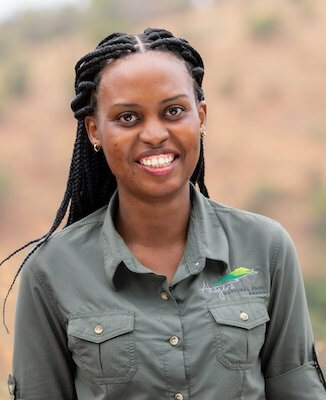

























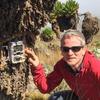
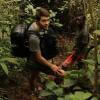


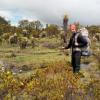



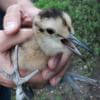













23 November 2022 2:58pm
Hi Liz, unfortunately you will still need a Raspberry Pi as host for the OAK-1 camera to reproduce our hardware setup. It's also possible to use another Linux-based system (e.g. Raspberry Pi alternatives), but I didn't test this myself and the setup process will be different to our documentation (and probably not so straightforward). I'm planning to publish the documentation website in the next weeks, but I can already send you detailed information about putting together the hardware if you are still interested.